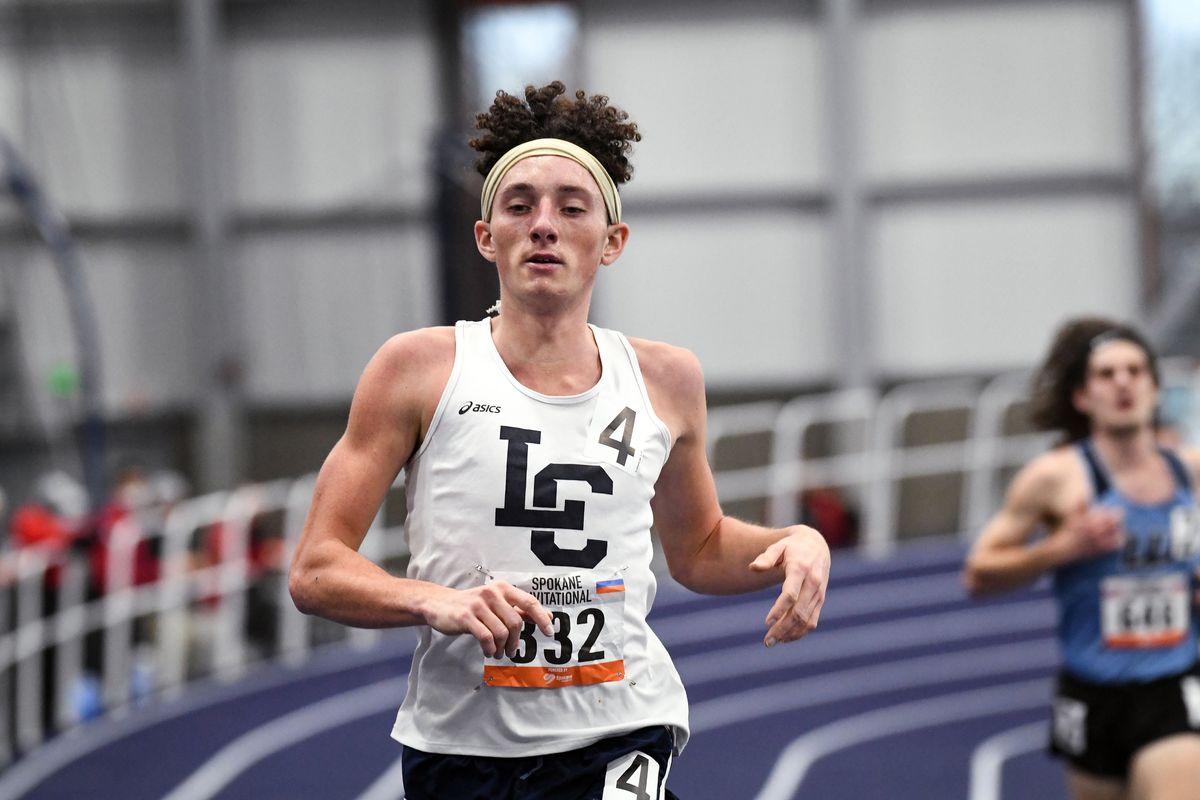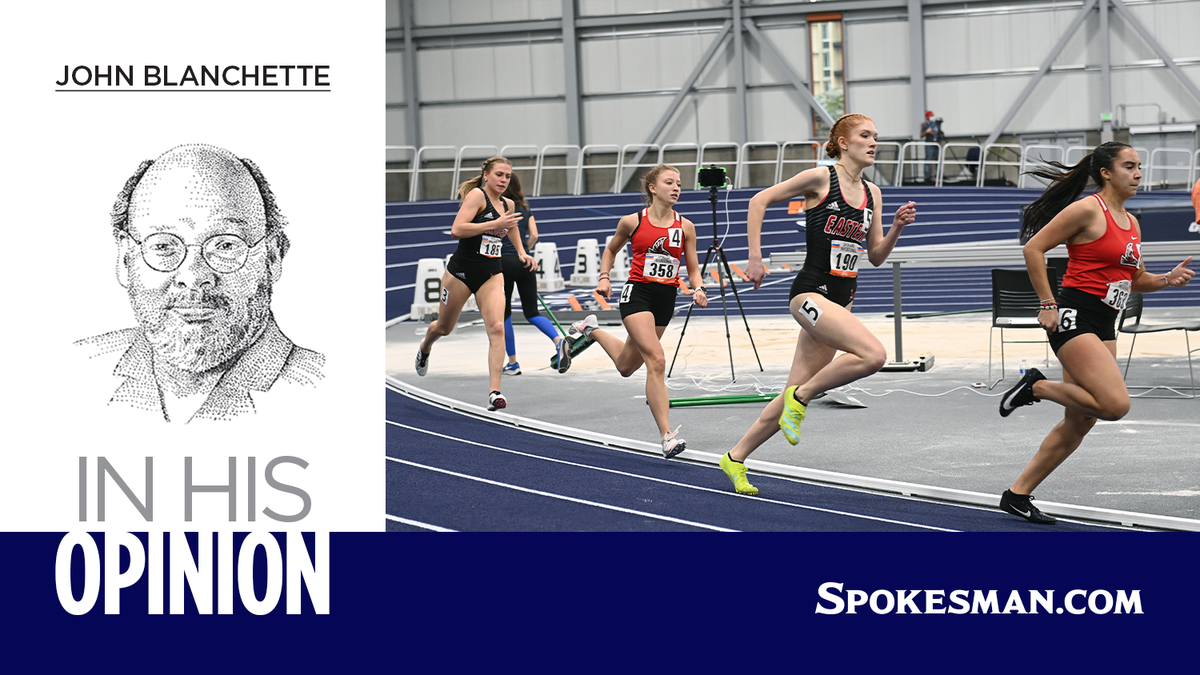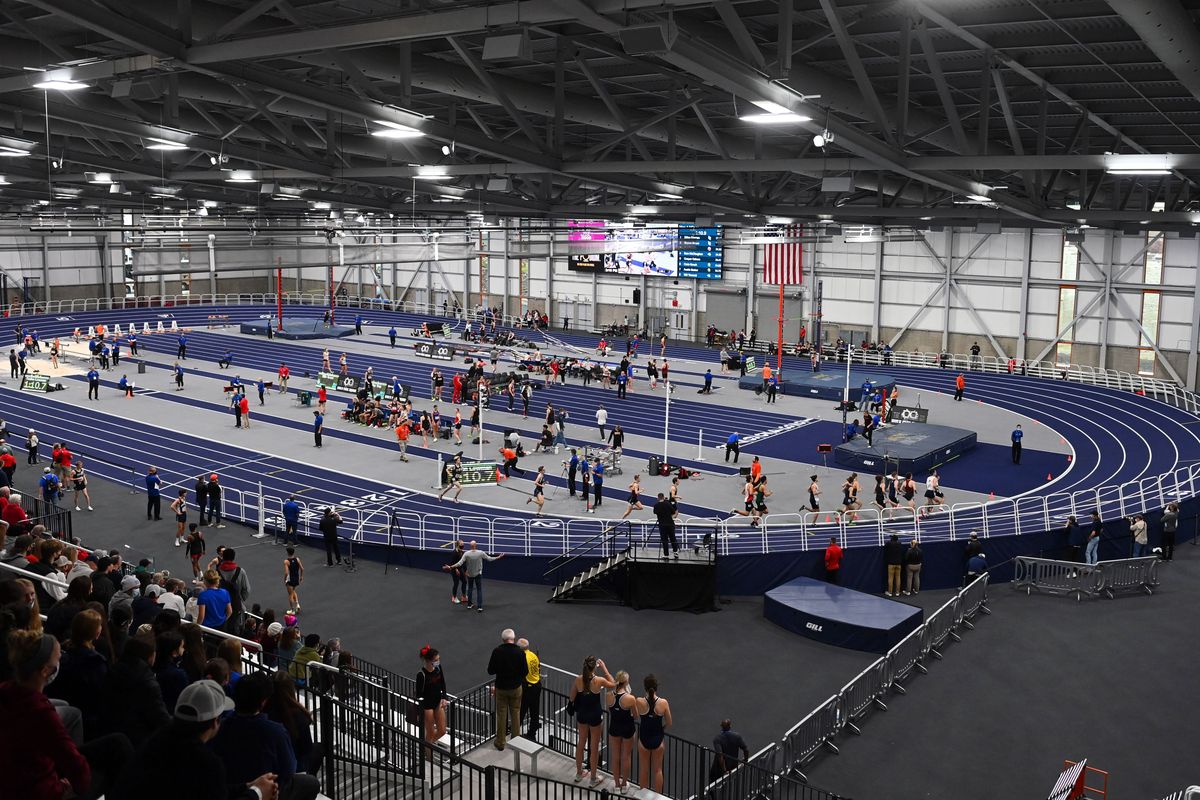John Blanchette: The Podium serves as world-class facility for preps and pros alike
A tick or two past 9 a.m. Saturday, a Western Oregon graduate student named Devin Hasher skimmed over a high jump bar set at 6 feet, ¾ inch. Official Jim McLachlan penciled an “O” on his score sheet, and so the Podium was baptized.
The what?
The Podium. The shiny new edifice on the north bank that isn’t the Spokane Arena, with the expansive views of Riverfront Park and downtown. If you’ve walked or bicycled or driven past and you’re not quite sure yet just what it is, you’re not alone, and the name maybe doesn’t give it away. But the athletic traffic destined to go through the place will take care of that soon enough.
Anyway, Hasher’s sole possession of the facility record lasted maybe 30 seconds, until someone did it again – a rinse-and-repeat routine that cycled through for the nine-hour duration of the Spokane Invitational track and field meet.
The high jump mark, for instance, wound up in the possession of Joseph Ruddell, a University of Idaho sophomore who stands 6-9 himself and used to swat away six shots every game at his San Luis Obispo (California) high school. On Saturday, he cleared 7 feet for the first time in his life – that much plus a half-inch, in fact.
“Pretty amazing,” he allowed.
If you could find a consensus among the 535 participants Saturday, that was it.
Lifetime bests were not infrequent, even a month in advance of the normal start of the collegiate indoor season in this part of the world. But more than that was the sense of being in on something special – a modest all-comers endeavor in a world-class, just-out-of-the-bubble-wrap venue staged with uncommon professionalism for a shakedown cruise.
“It got me in the mood to run just walking in here,” said Cole Olsen, a Lewis-Clark State senior who won the men’s 5,000 meters. “You’re kind of awestruck – for better or worse.”
Yes, $54 million – $8 million for the 200-meter, hydraulically banked track – will buy a goodly amount of awe, especially when it comes to kids from Kooskia, Idaho.
But in bankrolling this building with its reserves – along with an existing state sales tax rebate, lodging taxes and a contribution from the city – Spokane’s Public Facilities District and its partners at the Spokane Sports Commission were casting a wider net.
Already, representatives of more than 70 sports governing bodies have been in town to check out the Podium for their championships and other events. USA Karate brings its nationals – and 2,000 athletes – here in July.
Between now and the end of February, there will be 18 days of track and field involving everyone from high schoolers to Olympians, culminating with the USATF indoor nationals Feb. 26-27.
Which, frankly, seems like an odd bet, given what’s become of track’s spectator appeal across the nation. But filling seats – and The Podium only has about 4,000 to fill – is only part of the equation.
“There were a lot of eye rolls – including from the PFD – when we brought up track,” admitted Eric Sawyer, CEO of the commission. “But you have to look at the goal of the building and what we’re trying to accomplish from an economic development perspective. Indoor track season in December-March. That’s a down time for visitor stays here, for bringing people to town. Track is people intensive, and that’s a lot of stays for Spokane.”
Maybe half of Saturday’s athletes were overnight visitors, along with their coaches and support staff – including three teams from California. More will follow.
Jason Drake, formerly the cross country coach at Washington State and Washington, is now head track coach at Fresno State – as well as the ramrod imported to be technical director for the Podium’s early forays. He’ll be bringing his team with him next month.
“There is no other 200-meter banked indoor track on the West Coast,” he explained. “The next closest is in Albuquerque, and after that you’re going to Nebraska or Texas. You think of all the schools that sponsor indoor track in California and they have nowhere to go. We can’t accommodate all the teams that want to be in meets here now.”
It would be a bonus if, in addition to make restaurateurs and hoteliers happy, the Podium’s menu might spark some spectator interest. That will likely have to wait for the nationals, or perhaps the Lilac Grand Prix in February, an abridged program of 10 single-heat middle-distance races with entry standards – like a 3:55 mile for men – that should lure some of the nation’s best.
But local kids will get a bump from the building, too.
“We came here Tuesday for a workout,” said Gonzaga coach Pat Tyson, who’s as immersed in the city’s running history as anyone. “I watched the kids’ faces and it was like they got a brand new car. It’s like that episode of ‘The Wonder Years’ where they go shopping for a new car. Kevin wanted the convertible, but they ended up getting the station wagon.
“Well, we got the Mercedes.”



